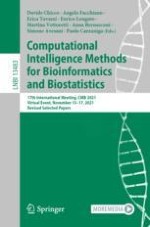2022 | OriginalPaper | Buchkapitel
Deep Recurrent Neural Networks for the Generation of Synthetic Coronavirus Spike Protein Sequences
verfasst von : Lisa C. Crossman
Erschienen in: Computational Intelligence Methods for Bioinformatics and Biostatistics
Aktivieren Sie unsere intelligente Suche, um passende Fachinhalte oder Patente zu finden.
Wählen Sie Textabschnitte aus um mit Künstlicher Intelligenz passenden Patente zu finden. powered by
Markieren Sie Textabschnitte, um KI-gestützt weitere passende Inhalte zu finden. powered by
